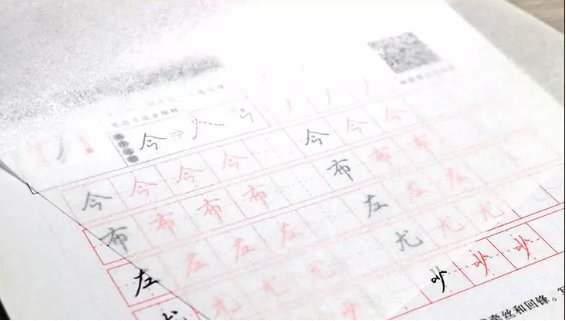Everyone generally believes that middle school students generally refer to teenagers aged 12-18. After six years of accumulation in primary school, middle school students have reached an important stage of development in learning. Their level of calligraphy practice has been well established and well developed in primary school. However, there are some issues that middle school students need to pay attention to when mastering calligraphy practice methods:

First: Middle school students need to further consolidate their fast and flexible basic skills when practicing calligraphy, and they can improve it somewhat compared to those in elementary school, that is, they can add some basic movements of directly connecting strokes in the same direction, and the font can also be changed from regular script to running script.
Second: Increase the understanding of the standardization of fonts, including some knowledge of cursive fonts that need to be reasonably simplified when writing fast, to provide a foundation for further satisfying fast writing.
Third, determine the direction of development. If you just want to write well in daily learning, you only need to boldly apply running script fonts; if you are interested in calligraphy, you can add some famous ancient calligraphers' inscriptions (to The study of running script (mainly running script). (This kind of learning does not mean tracing or copying, but combining the above basic movements to further appreciate the changes).
The method for middle school students to practice calligraphy requires practicing the following:
When middle school students practice calligraphy, they must first train their eyes, that is, read the posts carefully.
Huang Tingjian, a calligrapher in the Song Dynasty, said: "The ancients did not always rely on copying to learn to write. They often hung the ancient calligraphy works on the walls, looked at them attentively, and then started writing when they saw it correctly." Ouyang Xun of the Tang Dynasty discovered Jin Dynasty's calligraphy works. I couldn't bear to leave the monument written by Dai Suojing, so I simply sat down and read the monument for three days.
The more posts you read, the sharper your eyesight will be, and you will know how to write well and what is good about it. There is an idiom called "high eyes but low hands". I think: high eyes are the prerequisite for high hands. If you can't discover beauty and don't know what beauty is, you can't even talk about creating beauty. Many students think that sloppy writing is the so-called running script. The reason why they regard ugliness as beauty is that they have "low eyesight and low hands".
Secondly, we need to train our brain or our heart. On the basis of careful observation, you should also firmly remember the well-written fan characters in your heart and engrav the shape of them deeply in your brain. Whenever you mention this character, you can immediately think of it. shape on copybook. Be sure to have a clear mind and a clear mind.
The third thing is to practice. The purpose of eye training and brain training is to figure out how to write characters. The mind can think of the best effect of writing, but the hand may not be able to write the best effect, because the brain may not be able to direct the hand, and the hand may not be able to direct the pen. Practicing hands is to achieve the state where mind and hand are consistent, and hand and writing are consistent, so practicing hands is also crucial. Hand training mainly involves practicing finger strength, wrist strength and hand feel.
The fourth is to practice structure, because the key to practicing calligraphy is to master the structure of characters. The structure of a character refers to the length ratio of the strokes of the character and the interpenetrating and avoiding relationships between the strokes. Xie Xiaodong sang in the song "Chinese": "My favorite character is the square character taught by my husband. I have to be like him when I am square and upright..." "Square and upright" summarizes the structural characteristics of Chinese characters.
Fifth, practice your strokes. Many students have practiced calligraphy. They started practicing regular script and have forgotten many rules of how to use calligraphy. They only remember the strokes. As a result, the characters written out are cumbersome and look like ghostly symbols. I encourage everyone to start practicing with boldface characters, grasp the glyphs, and eliminate pauses.
Recommended calligraphy practice copybooks for middle school students, this one is more comprehensive:
Regular script: "Yan Qinli Stele" and "Duobao Pagoda Stele" by Yan Zhenqing
Seal script: Probably from Zhao Tieshan, but it’s hard to buy
Official script: (Boys) "Stele of Ritual Utensils", "Stele of Zhang Qian", "Ode to the West" and "Ode to the Stone Gate"
Recommended copybooks for girls to practice calligraphy: "Ritual Stele", "Cao Quan Stele" and "Yi Ying Stele"
Thousand-Character Essay: "Zhiyong's Thousand-Character Essay" is quite good
Regular script: Wen Zhengming and Zhao Mengfu are enough.
Running Script: Of course Wang Xizhi, "The Preface to the Holy Teaching" should come first. "The Preface to Lanting" is more difficult. You can practice after practicing the "Preface to the Holy Teaching"
Cursive Script: Let’s practice “Sun Guoting Script” first








